{Click on an image to enlarge, then use the back button to return to this page}
This page last updated on 10/11/2017
Introduction: As I began to discover more and more rock art sites during my hikes over these past several years, I have become witness to far too many examples of where persons had seemed fit to deface them with graffiti and other examples of damage. Eventually I realized that the sharing of my hiking adventures could have the potential to increase public exposure, and thereby increasing the possibility for even more damage. As a result, I decided to preface each of my rock art pages with the following information to help educate visitors about the importance of these fragile cultural resources. Before scrolling down, I implore you to READ the following ... as well as the linked page providing guidelines for preserving rock art.
Here are a few simple guidelines you can follow that will help to preserve these unique and fragile cultural resources that are part of our heritage. Guidelines for Preserving Rock Art. If you would like to learn more about the Nevada Site Stewardship Program, go to my page ... Nevada Site Stewardship Program (NSSP).

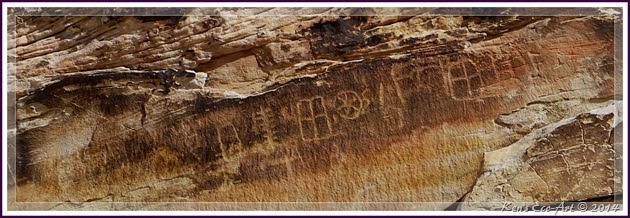 |
| (Fig. 01) |
|
Area Description: Located about 8 miles east from exit 75 on the I-15, the Buffington Pockets is a geographic area that surrounds the beginning of the Bitter Spring Backcountry Byway Road that runs in a south easterly direction through the Muddy Mountains, south of Valley of Fire. The Buffington Pockets feature many of the same sandstone formations found in the Valley of Fire. The area’s Aztec sandstone is filled with a “rainbow” of colorful layers with lots of red, orange, purple and white slick-rock. Located behind a small manmade dam is a short canyon containing several petroglyph panels.There are even a few more in a steep ravine on the west side of the canyon. For more detail about the area, refer to my page … Buffington Pockets Hike.
About the only information that I have been able to ascertain about their creation is that the Anasazi Indians dominated this area of Nevada from around 1 A.D. to 1150 A.D. The virtual art gallery of petroglyphs on these soft sandstone canyon walls can probably be credited to this early culture. The Paiute Indians are the likely descendants of these Indians and may have also contributed to some of these panels.
|
 |
| (Fig. 02) |
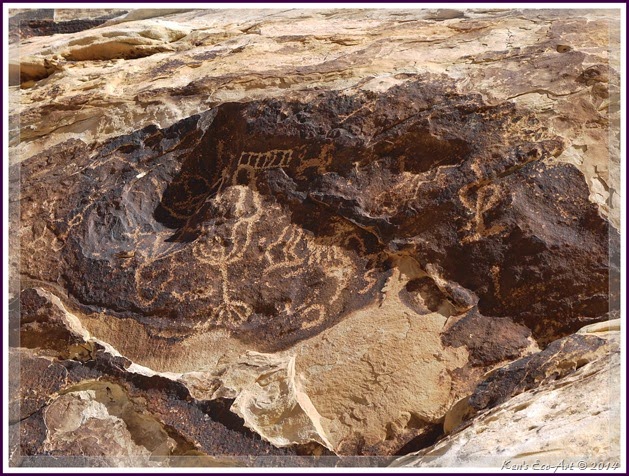 |
| (Fig. 03) |
 |
| (Fig. 04) |
One of the more interesting panels is located quite high up (Fig. 02) on the east side of the canyon wall. Because it has been inscribed as one long line (Fig. 01), it would appear that it might be some type of message. Not unusual there are several panels that contain a variety of unrecognizable symbols (Figs. 03 & 04), However, a little lower to the ground on the west side of the canyon are two panels containing anthropomorphs (symbols representing people) (Fig. 05) and zoomorphs (symbols representing animals) (Fig. 06). As you begin to exit the narrow canyon, there is a rather steep ravine leading to the top of the ridge line. About two-thirds of the way up there are two panels located high on the cliff side on the right hand (north) side of the ravine (Fig. 07). Due to their height, I did not attempt to climb up to them, however, I did zoom in with my telephoto lens for a couple of pictures (Figs. 08 & 09).
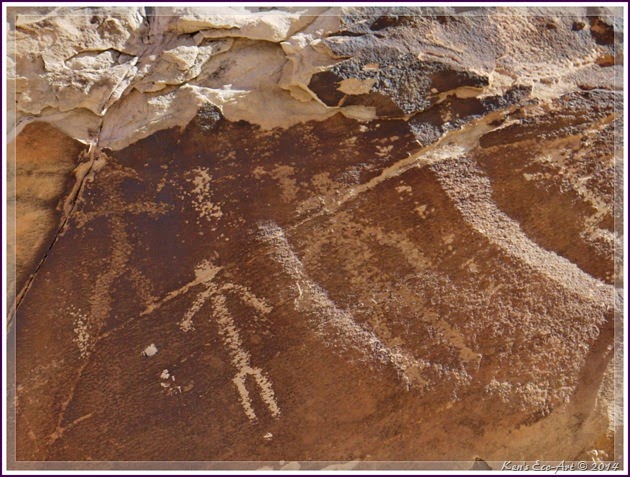 |
| (Fig. 05) |
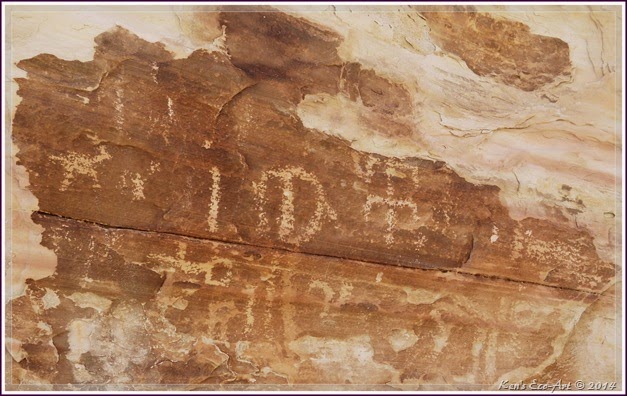 |
| (Fig. 06) |
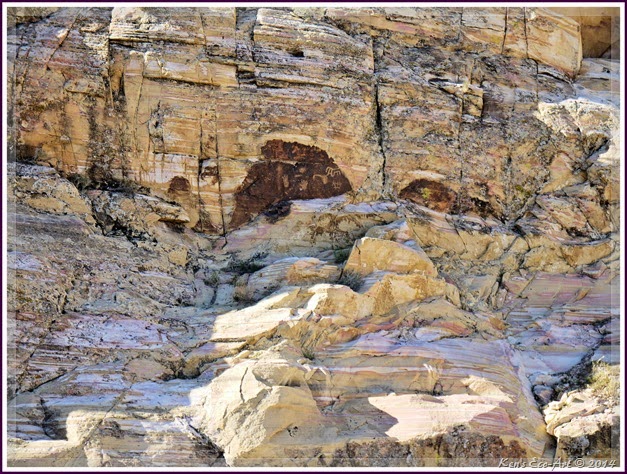 |
| (Fig. 07) |
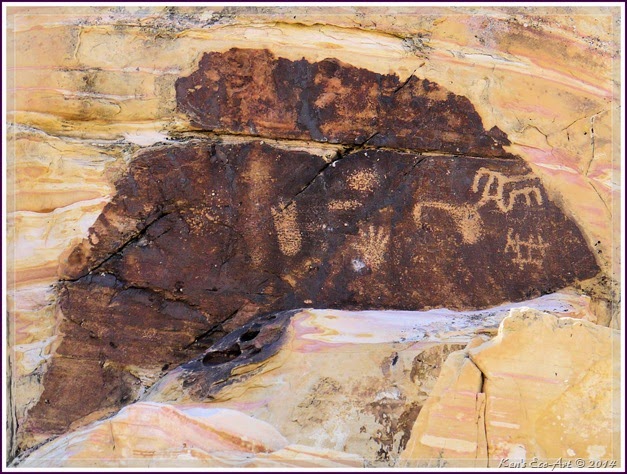 |
| (Fig. 08) |
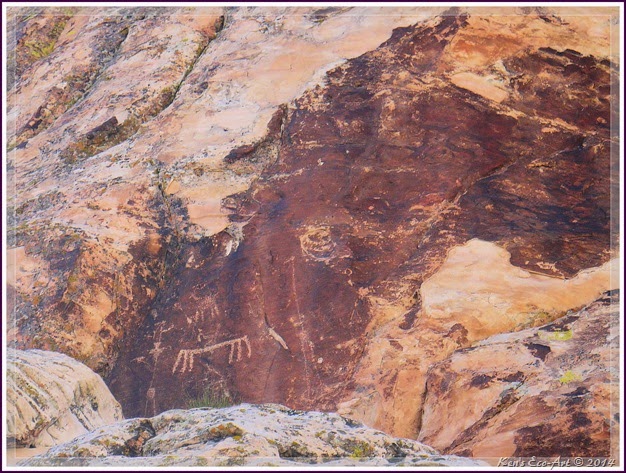 |
| (Fig. 09) |
_________
Reference Materials:
Manuscript written by Kenneth C. Clarke










